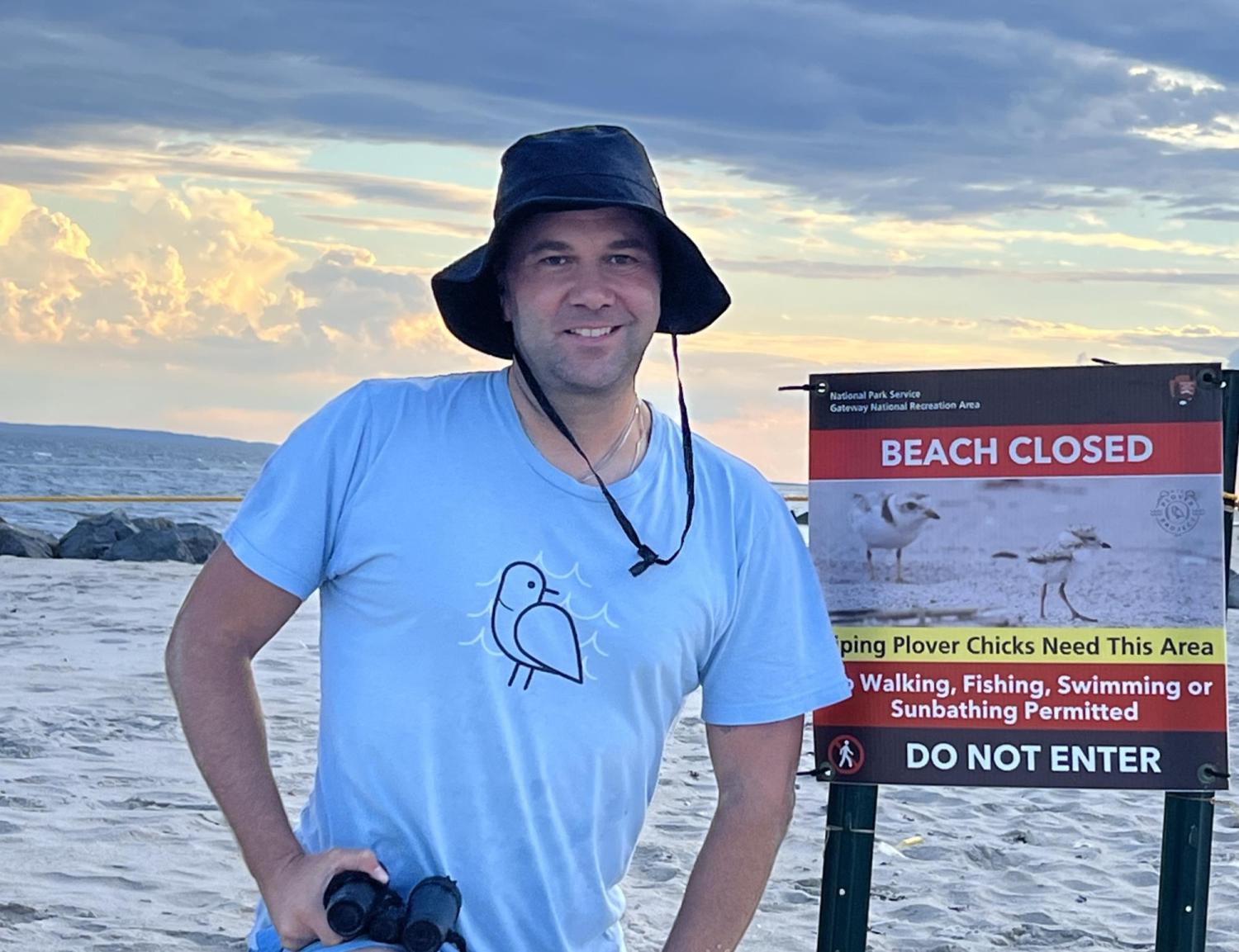
The Plover Project

Chris Allieri (EnvSt, LatAmerSt’96) is the founder of the NYC Plover Project, a group of volunteer ambassadors who teach New Yorkers how to share the shore with the endangered piping plover. Approaching its third summer, the fledgling organization has been named the volunteer group of the year by the National Park Service.
You majored in environmental studies at CU. Where do you get your drive to protect the planet?
I took a class on environmental justice and racism with the late Adrienne Anderson [at CU] which was important for me. I also had the great fortune to take a few courses with the legendary Cathy Comstock. Living in Farrand Hall, I took Gandhi’s “Satyagraha: Love in Action for Humans and Other Creatures,” which had a profound impact on me.
Growing up in New Jersey, I was able to see beautiful natural areas alongside refineries and pollution. I knew I had to do something about it, so in high school, I started my school’s first environmental club. We raised money for rainforests and started our first school-wide paper recycling program.
Birders often talk about their “spark bird” — the first species that inspired a love for not just birds, but nature in general. Do you have a spark bird?
Absolutely, the piping plover. My late father really loved birds, shorebirds in particular. We were at the beach when I was a young kid, and a U.S. Fish & Wildlife biologist showed me a piping plover with his scope. It was the mid-80s, and piping plovers were just listed under the Endangered Species Act. There were so few in NJ. It was tiny. I could barely see it, but I remember it was the first time I heard about or saw an endangered species.
Tell us about the NYC Plover Project.
At the beginning of the pandemic, I was out at the beach in NYC and, to my surprise, I saw a piping plover run by me, and then another and another. And then I saw dogs off leash, kids up on the dunes and basically no fencing or signage. I was excited but also furious: “Who was protecting them?”
I spent that first summer taking photos, emailing the National Park Service, NYC Parks Department and the press, pushing for more protection of shorebirds. But I knew I had to get something new going.
In March 2021, I founded the NYC Plover Project and recruited a few dozen volunteers. We formed a quick partnership with the National Park Service, which oversees Gateway National Recreation Area. In our first summer, we had volunteers out on the beach connecting with beachgoers. By the end of our second season, we had over 75 volunteers who clocked nearly 4,000 hours of volunteer time. We have connected with thousands of beachgoers, created better signage, helped the park monitor breeding pairs and taught people about plovers.
Was there a time when someone’s mind really changed after learning about the project?
This happens each and every day! Celebrating and protecting wildlife in our communities — especially urban ones — is something we can all come together on. Earlier this summer, after a long and somewhat intense conversation with a beachgoer, he said to me, “I really hated these birds, and now I don’t. You helped change this old man’s mind and I thank you for that.” If you are friendly, informative and communicate your passion, why you are involved, it is much more effective than leading with a lecture or laws.
What’s the importance of protecting smaller members of an ecosystem like the piping plover?
People get excited about snowy owls and bald eagles, the truth is, it is a lot rarer to see a piping plover. Climate change and coastal resiliency is front and center for many communities along the Rockaway Peninsula, where these birds nest.
Piping plovers are tiny and hard to spot, and their stories aren’t told. We are hoping to get each and every New Yorker — especially those that go to the beach or live near beaches — to know about them. If people know, they will care.
Photos courtesy Chris Allieri

